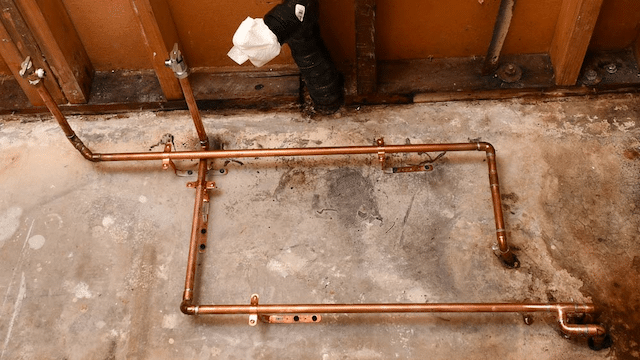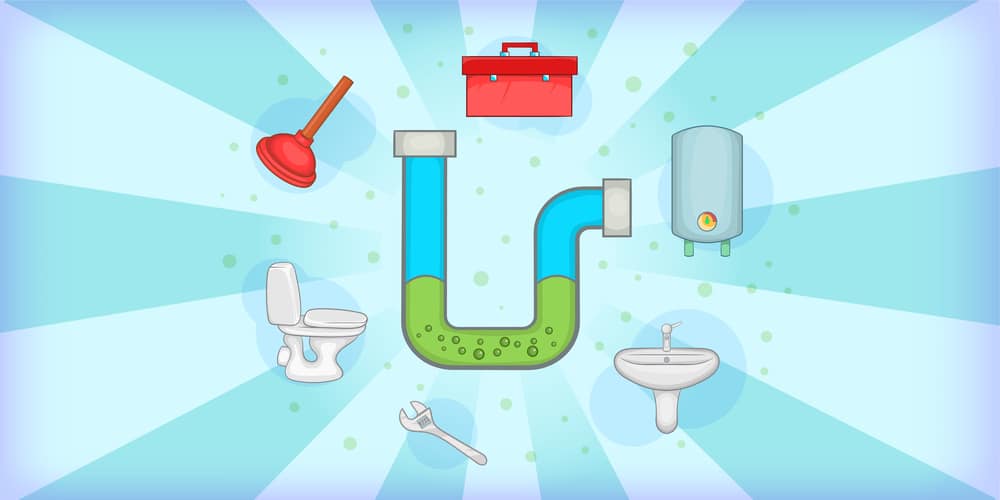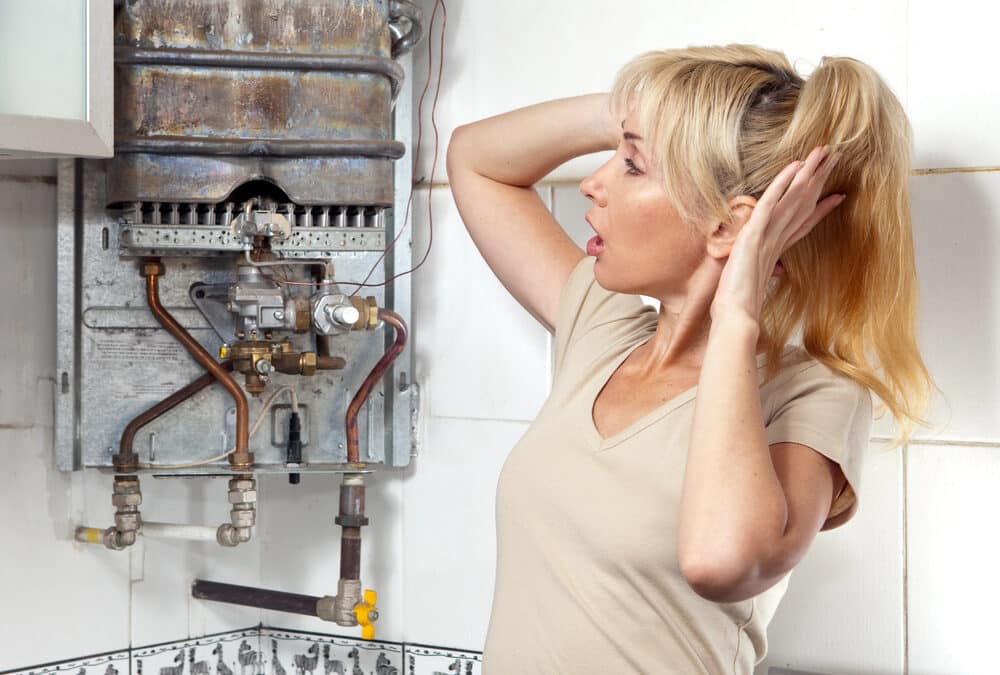If you’re a homeowner, it’s important to know about your home’s water supply line. This line brings fresh water into your home and is responsible for distributing water throughout the house. It’s essential to keep this line in good condition so that you always have access to fresh water. In this blog post, we’ll discuss everything you need to know about your water supply line. We’ll cover what water supply lines do, how they work, and what you can do to keep them in good condition.
What Are Water Lines
Water supply lines are responsible for bringing fresh water into your home and distributing it throughout the house. The main line is typically located near the street, and it’s connected to the public water supply. From there, smaller water lines branch off and connect to the different parts of your home. There are different types of water supply lines in a home’s plumbing system. There are toilet supply lines, sink supply lines, and shower supply lines. All of these are connected to the main water supply line.
If you have a leak in your water supply line, it’s important to get it fixed as soon as possible. A leak in the water supply line can cause serious damage to your home and can lead to expensive repairs.
Schedule Service Online
Get a free estimate so you know what you're signing up for
"*" indicates required fields
For Emergency Services Call: 410-255-9300
How The Water Supply Line Runs Inside the House
The main water supply line/pipe leads into the house and then to the water heaters. Just before it reaches the water heater, though, it splits into two paths for hot and cold water pipes – called the cold and hot service lines. In most houses, both types of pipe travel in pairs to different rooms. But in newer houses, the supply lines from the water heater are usually separate.
This means that using water in one area doesn’t affect its availability in another nearby area. For example, when you flush a toilet, the pressure of the cold water supply to your shower is not reduced. That’s why you can suddenly have hot water available for your shower, which is really convenient.
The cold-water line splits away from the main water supply line and slopes away from the water heater. The cold-water supply pipes are installed in straight lines. This is to facilitate easy water movement into their respective areas in the house. The water heater follows a different line from the cold water supply line. The water in the tank is heated. After which the water heater releases the water into different hot water service lines.
Materials Used For Supply Plumbing Lines
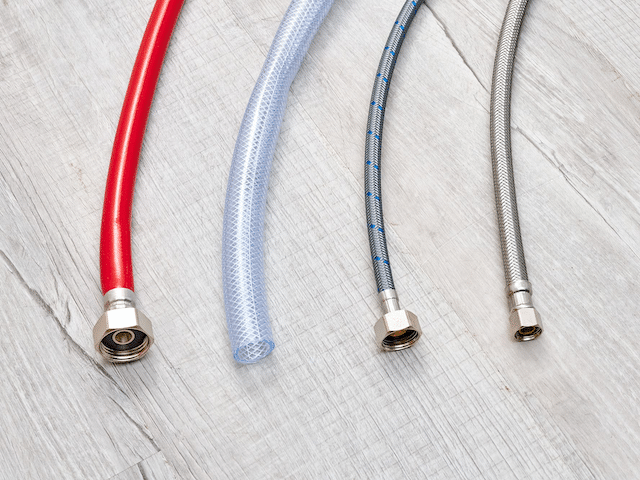
Galvanized Steel
Galvanized pipe has a zinc coating that protects the steel from corrosion. It used to be the most common type of pipe for water supply lines, but because it is more difficult and time-consuming to cut, thread, and install galvanized pipe than other types of pipe, it is now only used in small repairs or commercial applications.
Galvanized steel piping only has a lifespan of around 40 years, so if your house was built before 1960, it’s likely time for an upgrade. Home inspection agencies recommend that galvanized water lines be replaced every few decades to avoid any issues.
Copper
Copper pipe’s malleability, resistance to bio-corrosion, and non-toxicity make it ideal for hot/cold water distribution and HVAC refrigerant lines. Although copper was once used in gas piping, few jurisdictions allow this today due to the dangers of combustion. Like all metals, however, copper is subject to corrosion from various soil types which is why planners often specify a protective sleeve if the pipes will be buried.
Many years ago, copper was the go-to water supply pipe because galvanized steel wasn’t as popular. Even though copper plumbing pipes can last approximately 50 years, it thins out over time which then creates tiny holes where leaks occur. Nowadays, different types of plastic have become the favorite for this reason instead of using copper; however, you can still find copper pipes and fittings in many places.
PVC
The acronym PVC stands for polyvinyl chloride. Out of all the different types of plastic pipes used for water supply, PVC is most commonly utilized for drainage. However, it’s important to note that PVC is rarely if ever used in potable water applications because it isn’t considered safe to consume by many jurisdictions. With that being said, though, PVC pipe is still very popular in pool and spa systems
PVC piping is not limited to only white; it can come in many colors. The purpose of the PVC pipe can often be identified by the marks and colors on the outside. For example, purple pipes with black lettering are typically used for reclaimed water systems. Additionally, PVC comes in different thicknesses which are known as schedules; Schedule 40 is a popular choice for pipes utilized in water distribution.
CPVC
The acronym CPVC stands for chlorinated polyvinyl chloride. It is a type of plastic that is often cream-colored or off-white. This type of pipe can withstand temperatures up to about 180 degrees Fahrenheit, so it can be used for both hot and cold water lines.
The International Association of Certified Home Inspectors (InterNACHI) reports that CPVC and PVC pipes can generally last for 50 to 80 years if they are maintained properly, though there have been some instances where the pipes failed much sooner.
PEX
PEX (cross-linked polyethylene) is a type of plastic that is commonly used for hot and cold water lines in homes as well as for hydronic heating systems. It has good resistance to both hot and cold temperatures and is considered more durable than copper, with a lifespan of 50 years or more.
PEX tubing is now the go-to pipe for water supply, largely replacing copper and other plastics. They’re drawn to PEX because it’s cheaper and comes in long rolls of tubing that are much simpler to transport than other options. Additionally, since the flexible tubing can be bent around corners, fewer elbows and fittings are needed – which quickens installation overall.
Common Problems With Water Supply Lines
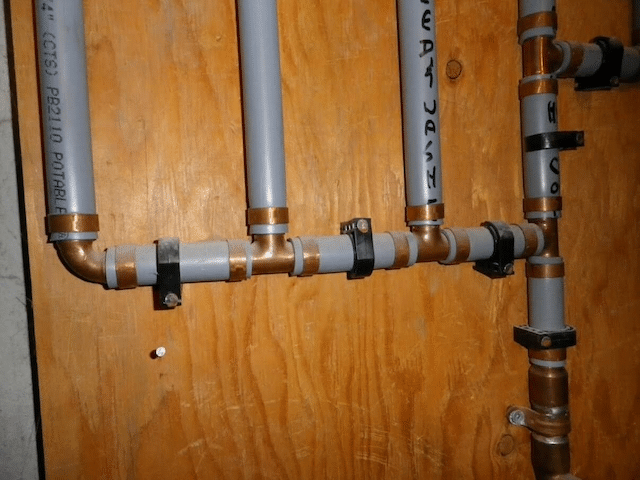
Even the best quality water supply lines can develop problems over time. Here are some of the most common issues:
1. Leaks
Leaks are the most common problem with water supply lines. They can be caused by many things, such as corrosion, poor installation, or damage. Leaks can occur at fittings, valves, or anywhere else along the line.
2. Corrosion
Corrosion is a major problem with metal water lines. It can cause leaks and lead to contamination of the water.
3. Poor Installation
Poorly installed water lines can lead to a number of problems, such as leaks, corrosion, and decreased water pressure.
4. Damage
Damage can occur to water lines from freezing, physical objects, or other sources. This can lead to leaks or breaks in the line.
5. Decreased Water Pressure
Decreased water pressure can be caused by many things, such as leaks, corrosion, or damage to the water lines. It can also be caused by a lack of water in the system.
6. Clogs
Clogs can occur in water lines from a build-up of sediment, corrosion, or damage. This can lead to decreased water pressure or a complete blockage of the line.
7. Biosolids
Biosolids are the solid organic matter that is left over from sewage treatment. They can build up in water lines and cause clogs, decreased water pressure, or a complete blockage of the line.
8. Burst And Frozen Pipes
One of the most common problems during the winter is burst or frozen pipes. This can be caused by a number of things, such as poor insulation, freezing temperatures, or high water pressure. Burst pipes can lead to major flooding and damage to your home. Frozen pipes can also cause decreased water pressure or a complete blockage of the line.
If you think you have a burst or frozen pipe, it is important to shut off the water to your home immediately and call a plumber.
9. Noisy Pipes
The next time you hear a noise coming from your pipes, don’t be alarmed! In most cases, it’s just air that has made its way into the water supply line. You won’t need to replace your main water line either.
How To Prevent Water Supply Line Problems
There are a number of things you can do to prevent water supply line problems. Here are some tips:
1. Inspect Your Water Lines Regularly: Inspecting your water lines on a regular basis can help you catch problems early. Check for leaks, corrosion, or damage.
2. Repair Any Leaks Or Damage Immediately: If you find any leaks or damage, it is important to repair them immediately. This will help prevent further damage and keep your water lines in good condition.
3. Insulate your water lines: Insulating your water lines can help prevent them from freezing in the winter. This will also help keep your home warm and reduce your energy bills.
4. Maintain proper water pressure: Maintaining proper water pressure can help prevent problems such as leaks, corrosion, or damage. Check your water pressure regularly and adjust it as needed.
5. Use a water filter: Using a water filter can help remove impurities from your water, which can help prevent corrosion.
6. Call a professional if you have any concerns: If you have any concerns about your water lines, it is always best to call a professional. They can help you diagnose the problem and find the best solution.
Conclusion
Water supply line problems can be a major inconvenience. However, by following these tips, you can help prevent them. If you do have a problem, it is important to call a professional as soon as possible.
Need A Plumber? Contact Us!
If you need a plumber, we are here to help! We offer a wide range of plumbing services, including water line repair and replacement. Our experienced professionals can help you find the best solution for your specific needs. Contact us today to schedule a consultation!

